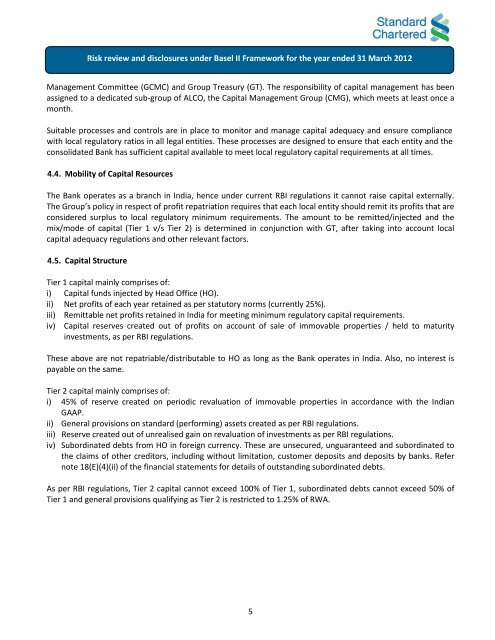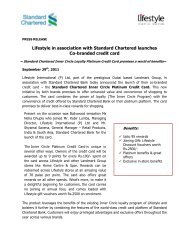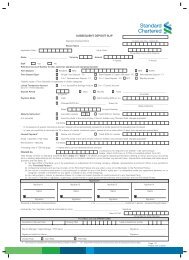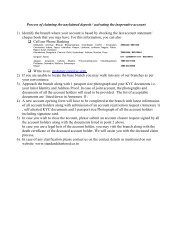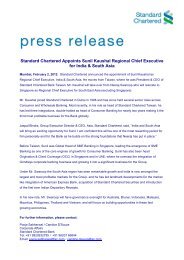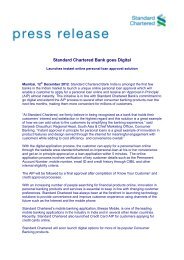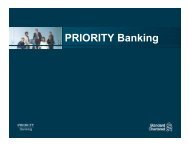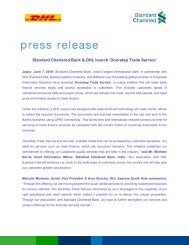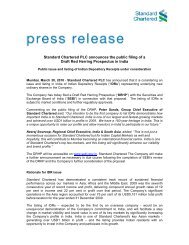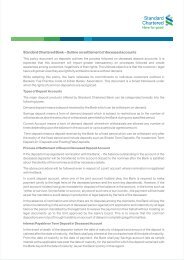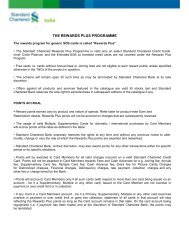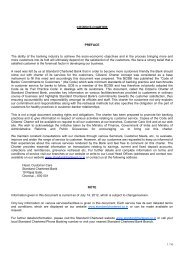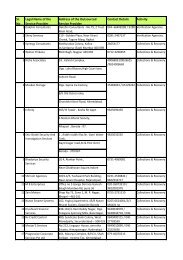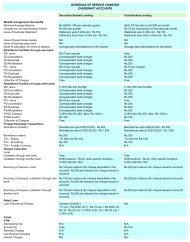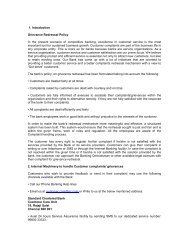March 12 - Standard Chartered Bank
March 12 - Standard Chartered Bank
March 12 - Standard Chartered Bank
Create successful ePaper yourself
Turn your PDF publications into a flip-book with our unique Google optimized e-Paper software.
Risk review and disclosures under Basel II Framework for the year ended 31 <strong>March</strong> 20<strong>12</strong><br />
Management Committee (GCMC) and Group Treasury (GT). The responsibility of capital management has been<br />
assigned to a dedicated sub-group of ALCO, the Capital Management Group (CMG), which meets at least once a<br />
month.<br />
Suitable processes and controls are in place to monitor and manage capital adequacy and ensure compliance<br />
with local regulatory ratios in all legal entities. These processes are designed to ensure that each entity and the<br />
consolidated <strong>Bank</strong> has sufficient capital available to meet local regulatory capital requirements at all times.<br />
4.4. Mobility of Capital Resources<br />
The <strong>Bank</strong> operates as a branch in India, hence under current RBI regulations it cannot raise capital externally.<br />
The Group’s policy in respect of profit repatriation requires that each local entity should remit its profits that are<br />
considered surplus to local regulatory minimum requirements. The amount to be remitted/injected and the<br />
mix/mode of capital (Tier 1 v/s Tier 2) is determined in conjunction with GT, after taking into account local<br />
capital adequacy regulations and other relevant factors.<br />
4.5. Capital Structure<br />
Tier 1 capital mainly comprises of:<br />
i) Capital funds injected by Head Office (HO).<br />
ii) Net profits of each year retained as per statutory norms (currently 25%).<br />
iii) Remittable net profits retained in India for meeting minimum regulatory capital requirements.<br />
iv) Capital reserves created out of profits on account of sale of immovable properties / held to maturity<br />
investments, as per RBI regulations.<br />
These above are not repatriable/distributable to HO as long as the <strong>Bank</strong> operates in India. Also, no interest is<br />
payable on the same.<br />
Tier 2 capital mainly comprises of:<br />
i) 45% of reserve created on periodic revaluation of immovable properties in accordance with the Indian<br />
GAAP.<br />
ii) General provisions on standard (performing) assets created as per RBI regulations.<br />
iii) Reserve created out of unrealised gain on revaluation of investments as per RBI regulations.<br />
iv) Subordinated debts from HO in foreign currency. These are unsecured, unguaranteed and subordinated to<br />
the claims of other creditors, including without limitation, customer deposits and deposits by banks. Refer<br />
note 18(E)(4)(ii) of the financial statements for details of outstanding subordinated debts.<br />
As per RBI regulations, Tier 2 capital cannot exceed 100% of Tier 1, subordinated debts cannot exceed 50% of<br />
Tier 1 and general provisions qualifying as Tier 2 is restricted to 1.25% of RWA.<br />
5


